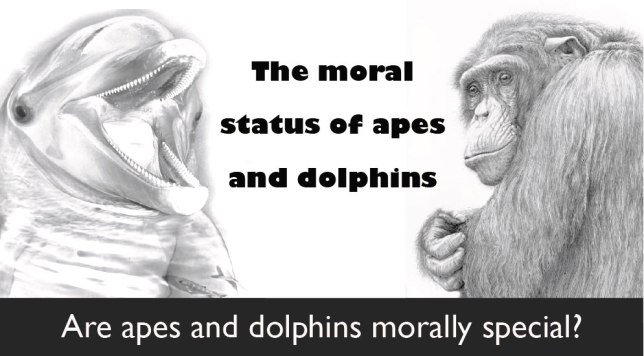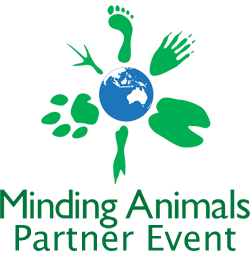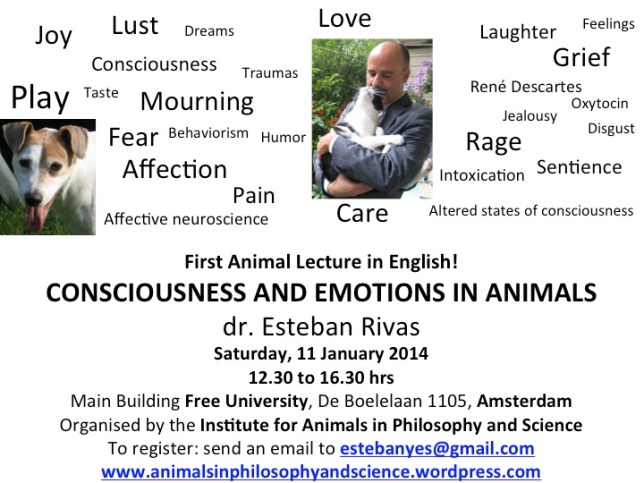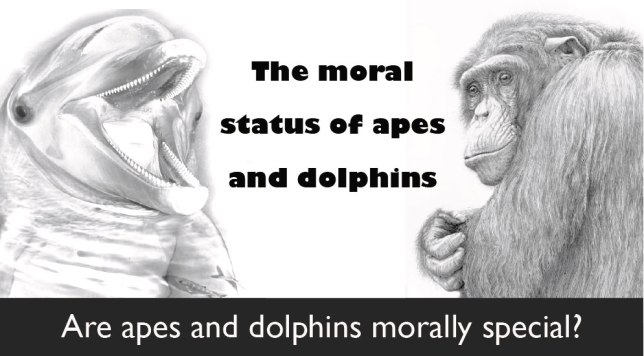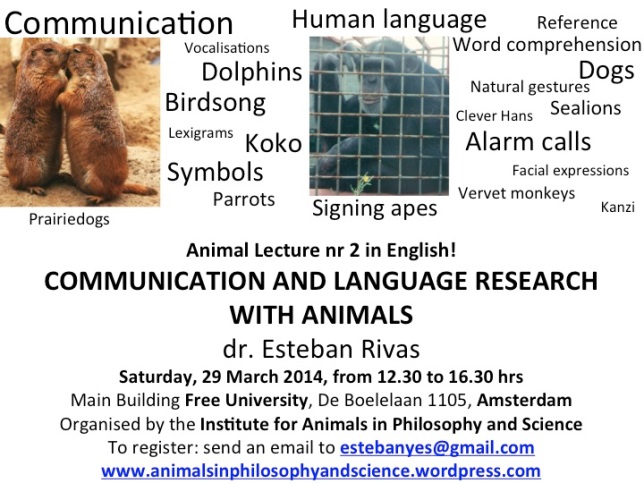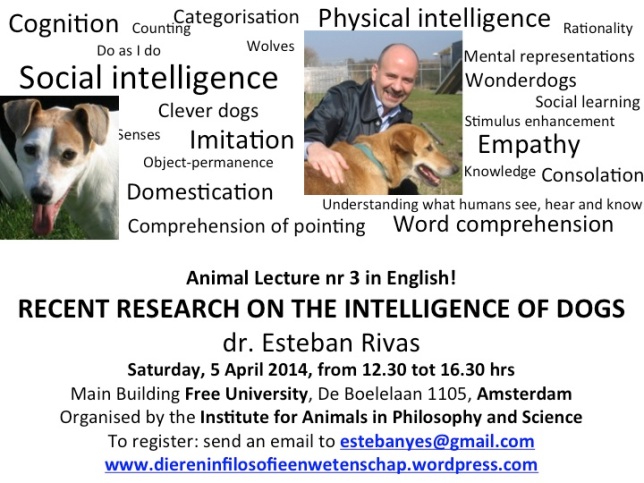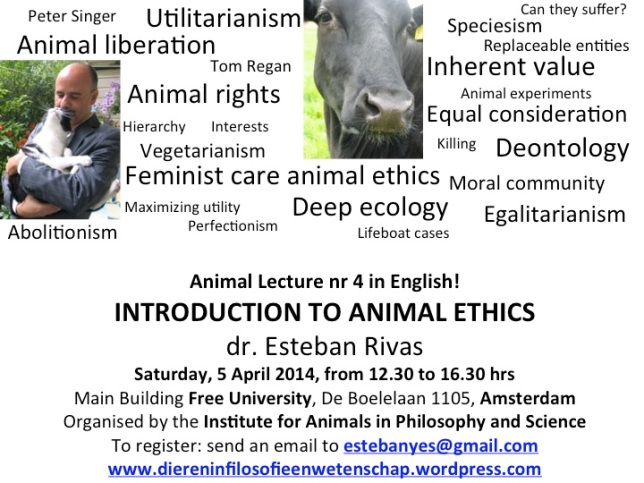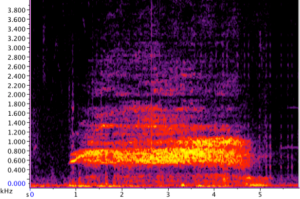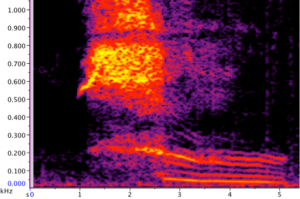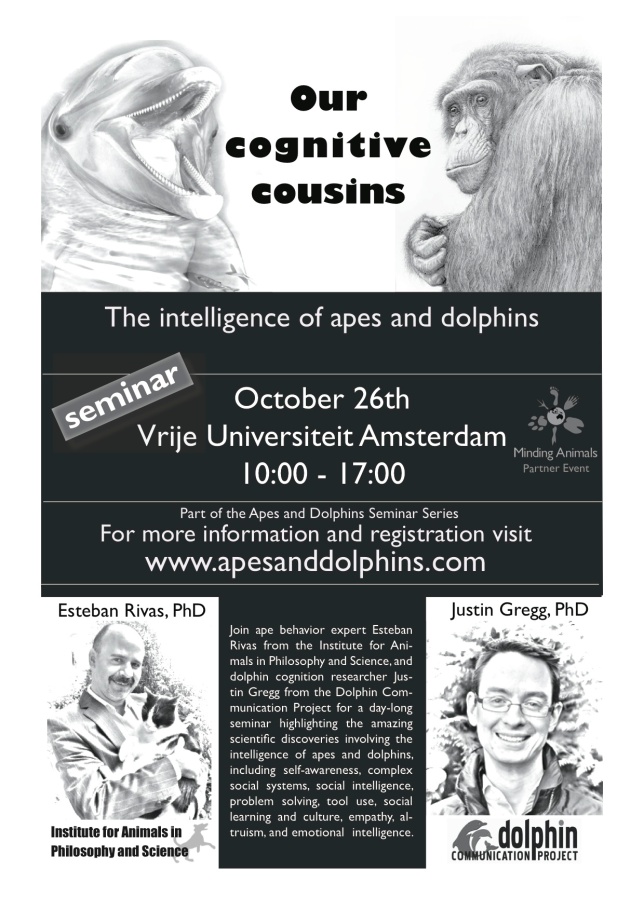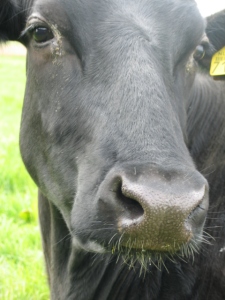In the past few years I have given with great success the course “Communication and language in animals. Recent developments in scientific research” at various universities in The Netherlands for the Higher Education for Older People (HOVO), in which I discuss the current scientific state of affairs with regard to the natural communication of all kinds of animals and the results from language research with various animals. At the HOVOs this course was only available for people of 50 years and older. I repeatedly got requests to organize this course also for people younger than 50 and now it’s time to do so. The Institute for Animals in Philosophy and Science is organizing this November a 3-day course “Communication and language in animals” for people of all ages.
Description:

The horse Clever Hans, early 20th century Berlin. Hans purportedly could answer many human questions…
Birds sing, dogs bark, and humans talk: everywhere animals are communicating. In the animal kingdom communication takes place in all kinds of ways. At a certain moment in evolution animal communication developed into human language. The question that scientists and philosophers have been asking for generations, is whether humans have a lonely position as the only animals with language. From the beginning of the 20th century many studies have been carried out in which scientists tried to teach all kinds of nonhuman animals (parts of) the human language. Science has also made a lot of progress in the study of the natural communicaton of animals. In this course we will discuss the current state of affairs with regard to research on communication and language in animals. The course will give you a broad overview, in which the communication and language research with nonhuman animals is presented in a critical manner.
Day 1. Saturday 2 November: Communication and human language: Characteristics and definitions. Language development in human children. The alarm calls of vervet monkeys and prairie dogs. The communication and dances of honeybees. The communication of whales and dolphins.

What information about predators do these prairie dogs communicate to each other?
On the first day we will discuss the various kinds of communication that exist. In order to make a proper distinction between animal communication and human language, the characteristics of human language are presented. We discuss the relationship between language and brain and we will look at language acquisition in human children. We will also look at the interpretation of animal communication: only an expression of passions and emotions, or can animals also refer to various things in the outside world? What meaning can be found in the alarm calls of vervet monkeys and prairie dogs? We will also discuss the dances of honeybees, with which bees can transmit information about food locations. Finally, the natural communication of whales and dolphins is presented, including whale song.
Day 2. Saturday 9 November: The natural communication of, and language research with, the great apes: chimpanzees, bonobos, gorillas and orangutans.
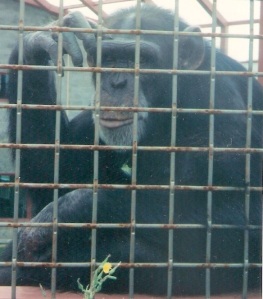
The chimpanzee Tatu makes the sign for BLACK.
How do our closest relatives communicate? In the past few decades our knowledge has increased about the various forms of communication of the great apes. We will discuss the communicative nature of the facial expressions of great apes, their particular vocalizations, and the communicative gestures that great apes naturally use. Next, the language research with great apes is presented. For more than a century, scientists have attempted to teach a human language to great apes in all kinds of, often controversial, studies. Chimpanzees and other apes were used in experiments in order to make them pronounce human spoken words. Later, chimpanzees, gorillas and orangutans were taught signs with which to communicate with humans. Famous apes like the chimpanzee Washoe and the gorilla Koko learned over a hundred signs. Nevertheless, soon the ape language controversy started, because in what way can we talk about actual language in these apes? We will discuss the methodological pitfalls and mistakes in interpretations and conclusions. I will also present my own study of the apes in language research. Finally, we will also discuss the research with Kanzi and other bonobos who learned to communicate by using geometric symbols (lexigrams).
Day 3. Saturday 16 November: Bird song and bird calls. Language research with dolphins, sealions and parrots. Understanding of human communicative signals by dogs and other domesticated animals. Language research with dogs. Evolution of human language.

Songbirds sing songs, but also have all kinds of calls with which they communicate.
All bird species have various kinds of calls: to remain in contact with each other, to express emotions, to warn for predators. How do you recognize these calls when you hear them in your garden or outside? Besides using calls, songbirds, parrots and hummingbirds also sing songs with a specific structure and function, which they learn from their parents. What are the similarities between birdsong and human language? Next, we will discuss language research with other animals than apes: Can dolphins and sealions carry out commands that are given by humans in the form of signs? Can parrots communicate with humans by speaking human words? And what do dogs and other domesticated animals understand of our communication, like pointing and gaze direction? Recent studies have shown that some dogs can understand hundreds of human words for all kinds of objects. Finally, we will discuss several theories about the evolution of human language.
After this course you will have a fresh, new look on the ways in which animals communicate and you will have knowledge regarding the question in what way we can talk about language in other animals. Besides surprising information about the animals around us you will also get an impression of the controversies in this field of study.
For whom? The course is meant for people who work with animals professionally, for students, and for anyone interested in animals and eager to broaden their knowledge about them. A specific former education is not required. The course will be given in the Dutch language, but a passive knowledge of English is convenient, given that some of the films that I will show are not subtitled.
Practical information. The course will be given on three Saturdays in November: November 2, 9 and 16. Each day will start at 11 o’clock in the morning and will end at half past 5 in the afternoon. It is recommended that one takes the whole course of three days, but one can also register for 1 or 2 days of the course. The registration fee is 160 euros for the whole course (students with student ID card 100 euros), or 60 euros (40 euros for students) for each separate day. The price includes a (vegan) lunch and coffee and tea.
Location: Madame de Pompadour, Langsom 28 in Amsterdam. This location is very well accessible both by car (there is even free parking!) and by public transport.
You can register by sending a message to estebanyes@gmail.com or by filling out the form below:
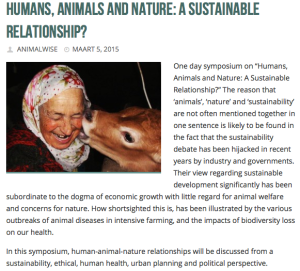 The other speakers and lectures are as follows:
The other speakers and lectures are as follows:

